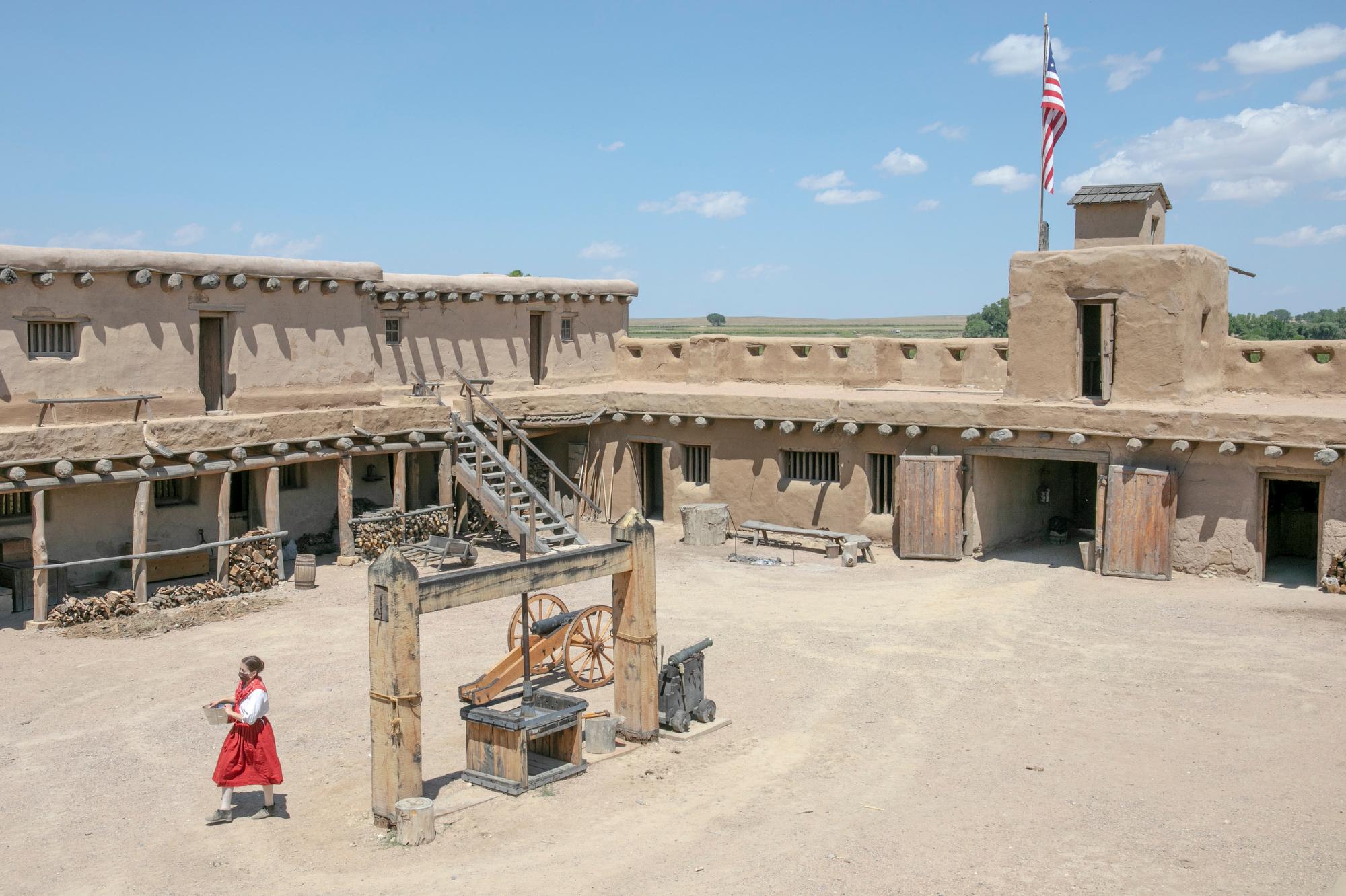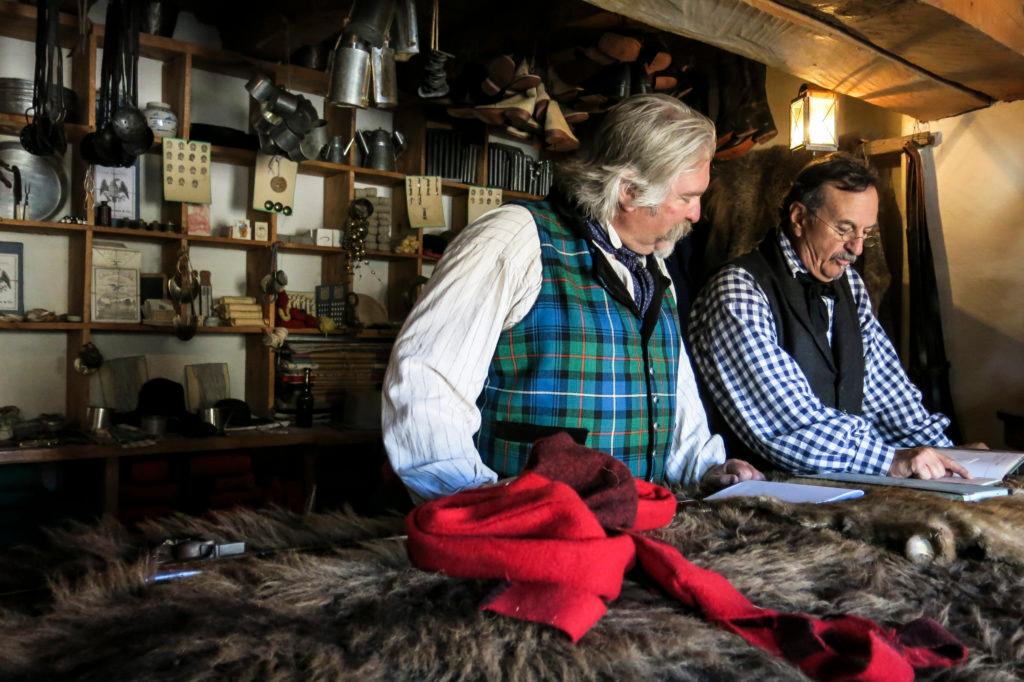
Parts of the decades-old reconstructed adobe trading post at Bent’s Old Fort National Historic Site near La Junta are failing. That includes some of the cottonwood and pine timbers used as supports for the building’s second story which began to show signs of safety issues last summer.
This led to the decision to close the fort’s upper level until the risks can be resolved and the structure restored. The first level is still open to visitors during winter hours, which are 9 a.m. to 4 p.m. Friday, Saturday and Sunday through mid-March. The grounds and trails are open daily.
Since the fort was rebuilt in the mid 1970s staff and volunteers have portrayed blacksmiths, fur traders, soldiers and others to demonstrate work and life along the Santa Fe Trail during the 1800s. This is known as living history. But that living history could undergo some changes, including how livestock may be managed.
National Park Service High Plains Group Superintendent Eric Leonard oversees the fort. He spoke with KRCC’s Shanna Lewis about why changes to this program are under consideration.
This interview has been edited for length and clarity
On using living history to serve more people
Beginning in the 1990s and as recently in planning documents is about 2012, park staff kept scratching their head and saying, well, gosh, we're doing this living history and it's very successful, but we're having trouble getting African-Americans, Native Americans and Hispanic or Mexican-Americans to come dress up and portray those roles.
Another issue around living history is this question of authenticity. What's authentic, what's accurate? Accuracy can be a gatekeeping device or a stumbling block. In the far past, 45 years ago, there are newspaper clippings that show white Americans portraying the African-American cook at Bent's Fort, portraying Mexican laborers at Bent's Fort, portraying Native Americans.
Quite frankly, that's not a practice that we would see as respectful or inclusive today of all Americans. And as a national park, Bent's Old Fort has an obligation to tell the story of this place to all Americans.
One of the challenges of the large scale living history programs that are popular … is (that) they serve an immensely small group of people. And so part of what I think is needed is a shift from large scale, costly and labor intensive events. If we do smaller things more often, it's more sustainable from a staffing and volunteer standpoint, and it would help increase tourism and opportunities for people to come visit the site.
On volunteer presenters
One of the tension points is that living history is meant as a method of presenting the past with very specific themes, goals, and objectives and professional standards. Many of the people (volunteers) that do this work are hobbyists who do it because they enjoy it. Like any hobby, you're doing it to satisfy yourself. If they can also then pivot and work within those professional standards, everybody succeeds together.
But a hobbyist’s motivation is often to have a good experience. As a national park, our job is to tell a story to the widest audiences possible. Living history is a method for telling a story, presenting the past. There should always be more than one tool in the toolbox, and living history will always be a part of what Bent’s Old Fort does. I think there's a better balance to be made, and that's what we're working toward now.
On keeping poultry, oxen, horses and mules at the fort
At no time has the park ever had an employee specifically dedicated to the care, training and use of livestock. It's been shared across multiple staff. National parks often have livestock and successful programs. What do they have? They have an employee dedicated to that.
The facility here, because the structure is replicating a historic building, may not be the best facility for the welfare of animals. While we're looking at reducing the livestock portfolio here to something manageable, there's no deadline to do so. We're not in a hurry. We recognize that we're in a situation that's not ideal in terms of the health and welfare of both employees and the animals in question.
On the plan and timetable for making changes
It's a moving target. We've not yet released a program schedule for this year. We're using this moment to look really hard at what our own internal needs are around capacity and training of staff. With prior practice and tradition here, volunteers were coming a handful of times a year, which meant that the bulk of the work is done by a very small team of people, and I want to make sure that they're supported and have the tools they need to be successful.









